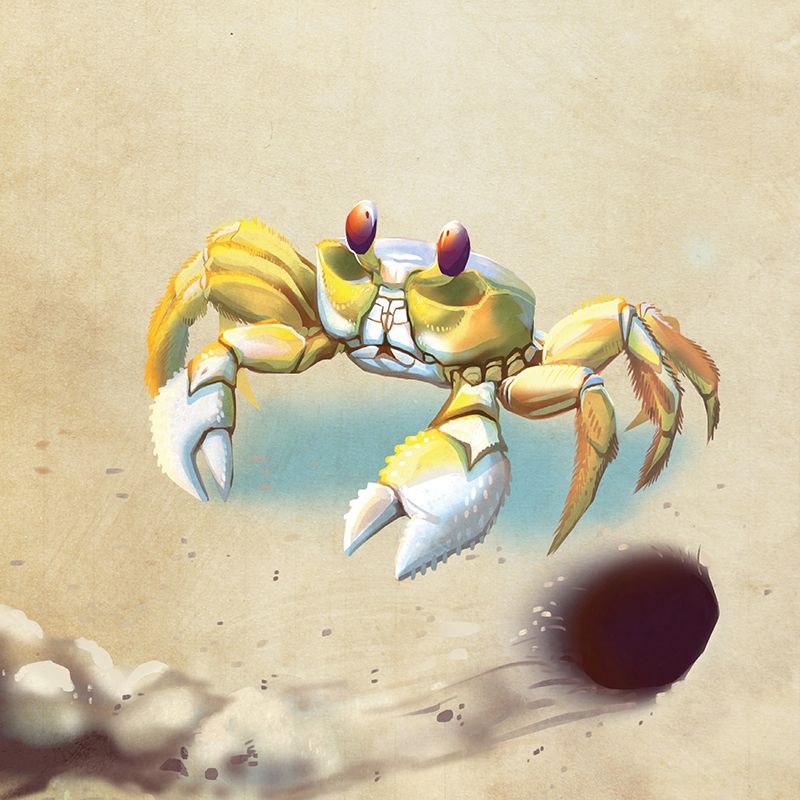Ghost crabs scuttle across the sand faster than you can say Ocypode quadrata, the scientific name for this sand crab that appropriately means “fleet-footed.” Called ghosts for their pale yellowish-white markings and their nocturnal lifestyle, these elusive beach dwellers are among the most adaptive creatures on the coast

Natural Eco-Checkers: Scientists can quickly assess the impact of human activity on beach ecosystems by measuring the presence (or absence) of ghost crabs (estimated by counting their holes in the sand). While these crabs have natural predators such as birds, raccoons, and dogs, one of their main threats is loss of habitat due to development, pollution, and human over-use of the intertidal zone. At this time, they are not considered threatened or endangered.
Night Stalker: Both predators and scavengers, these carnivores feed at night. Their diet includes small clams, mole crabs, insects, and the eggs and hatchlings of loggerhead turtles. Being nocturnal also reduces their risk of being eaten by shorebirds and gulls. When they do leave their burrows during the day, they have the ability to slightly change their color to match the surrounding sand.
Chillin’ Chelipads: They have two large claws (chelipads) and four pairs of walking legs, the “quadrata” of their scientific name. When ghost crabs run fast, they only use two pairs of these legs, raising their third and fourth pairs off the ground while they scamper sideways (sometimes as fast as 10 mph). While male fiddler crabs possess one oversized claw, both male and female ghost crabs have claws the same size. They also communicate by striking the ground with their claws and make a bubbling sound through stridulation, the rubbing together of their legs.
Great Gills: Although they are land dwellers, these crustaceans, like fish, breathe oxygen through gills that must be kept wet. While ashore, ghost crabs draw water from moist sand or dip regularly into the ocean shallows for necessary dampening. They can’t stay in the water long however, or they will drown.
The Eyes Have It: One of their most prominent features are large black eyes supported on tall stalks. These eyes can rotate 360 degrees and can spot prey or predator almost instantly in any direction. Males have small horns attached to the ends of their eyes; one of the few ways to tell the difference between the sexes.
Best Crab Wins: During the breeding season, males engage in a formal mano a mano competition, raising their claws and bodies in intimidating poses until one gives in and the stronger crab gets its mate. Mating occurs while both the male and the female have a hard shell. The female later lays her eggs in the surf, where the larvae drift for about six weeks before they hatch and make their way to shore. In the Carolinas, ghost crabs spawn from April through July.
Dig Deep: Ghost crabs create burrows in the sand that provide protection from the sun, weather, and predators. On the surface, their holes may only be a few inches wide (usually the size of the crab, generally around two inches across). Below, the tunnels can be as deep as four feet and branch out intricately into many directions. The crabs spend most of the day inside their burrows, emerging mainly in the early morning and at night. Young crabs dig their burrows close to the sea; older crabs (they live to approximately three years) dig higher up and in the dunes.